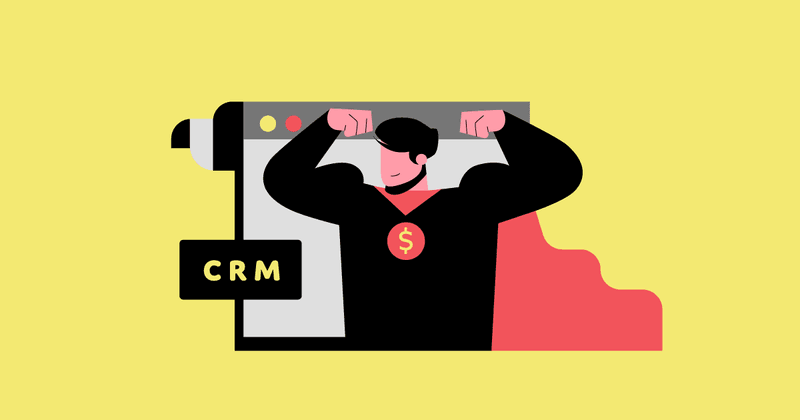Karan Tibdewal is an independent growth and retention consultant. You can connect with him on LinkedIn and listen to his biweekly podcast talking about subscriptions and CRM strategies called LTV Talks with Karan.
As subscription-based apps continue to grow in popularity, optimizing for subscription strategies and paywall design has become increasingly important. However, one aspect that is easy to and often overlooked is the role of customer relationship management (CRM).
This beginner’s guide to CRM is a look at how CRM channels like push notifications, email, in-app messaging, SMS, Whatsapp, etc. can be used to strengthen your overall subscription strategy and help you generate more business impact.
In today’s subscription space, if you’re not thinking about and experimenting with your subscription pricing, trial length, or paywall design, you’re already lagging behind. However, this is often where most of the apps stop. Having a complimenting CRM strategy can give you a competitive edge and generate a substantial increase in business impact.
This article is going to talk about how to strengthen your monetization strategy by getting started with CRM strategies and tactics. I’ve worked with over 30 subscription apps and applied these strategies and tactics to see an uplift ranging from 40-200% across all key subscription metrics, including increasing trial conversion and free-to-paid conversion, reducing churn, and winning back lapsed customers.
(Learn more about which metrics are important for you in these guides to subscription metrics and subscription analytics).
Why CRM?
Once upon a time, CRM in companies was an email dispatch center and its primary growth contribution was to boost revenue on tent-pole events (Easter sale, back to school, Christmas upsell, etc.). Strategically speaking, mobile-CRM (mCRM) has evolved drastically and is now an important growth function that helps businesses in growth and retention. A good mCRM team is now involved to unify the user data, orchestrate customer experiences and personalize user journeys. What does that mean more tangibly? Lifecycle messaging, user onboarding, engagement strategy, win-back flows, and user feedback collection. Depending on the type of app and user profiles you might look to do this via different channels such as email, in-app messaging, push notifications, SMS, WhatsApp, etc.
The impact of CRM
Before we jump into “how”, it’s useful to see some important wins that subscription apps have had by going the CRM route:
- Headspace saw a 14% increase in subscription revenue after implementing CRM tactics. They achieved this by sending personalized push notifications to users who had completed a free trial but hadn’t yet subscribed. The push notifications included personalized recommendations based on the user’s meditation history and usage patterns. As a result, Headspace saw a 200% increase in free-to-paid conversion and a 50% reduction in churn.
- The Wall Street Journal used CRM to segment its users based on their engagement levels and subscription status. By doing this, they were able to create targeted email campaigns that offered personalized recommendations and promotions. The Wall Street Journal saw a 28% increase in revenue from these email campaigns and a 26% reduction in churn among their subscribers.
- Finally, Duolingo, a language-learning app, used CRM to identify users who had stopped using the app and then sent them personalized emails with recommendations for how to get back on track. Duolingo saw a 14% reduction in churn among these lapsed users.
To achieve similar results (which could be even higher if you are just starting out), it’s important to integrate CRM into your monetization testing mix and subscription strategy.
Here are some thoughts on how and where to get started, along with some tactical suggestions that could be helpful.
How to do this for your subscription app
Let’s say you don’t have any CRM attached to your app i.e. you don’t have any nudges except the ones built into your product. Only behavior and habit alone pulls your users back into your app.
If so, firstly, you’ll want to cut and divide i.e. segment your users in a meaningful and differentiating way. An easy way to do this is by user lifecycle stages — i.e.
- Onboarding: When a user is new to your app and trying to understand if your app can deliver on the promise.
- Activation: Getting users to their first intent-driven action that creates value for them. This could be the first meditation, editing your first photo, listening to your first track, etc. This is a key user stage and typically one of the biggest impact stages where CRM can impact your monetization.
- Engagement: This is getting users to perform the first series of actions. Carrying on the example of a meditation app, this could be users enrolling on an intro meditation course.
- Retention: Depending on your app, this stage means getting your users to a stage where they think of your app whenever they want to solve a problem. If you are a tax-filing app, then this would be once a year. The reason to give this example is to show that you need to understand the usage frequency of your app to define this for your app.
- Win-back: To get users who used to be retained/paid, back to their original state. This typically is also a gold mine for impacting your revenue metrics.
💡 I recommend starting with Onboarding, Activation & Win-back if you’re just starting out to see the biggest impact with low to medium effort.
Get creative with CRM
One important point to note is that CRM tactics are not merely a bunch of nudges or notifications but can also help in more creative ways. For instance, by tracking user engagement and behavior, subscription apps can identify at-risk users and create targeted campaigns to encourage continued use.
Another use case of building CRM into a subscription app’s strategy is the ability to collect useful information about users that can inform paywall design and monetization strategies. In-app messages, for example, can be used to ask users about their goals, pain points, and preferences, providing valuable insights that can help optimize subscription tiers and pricing.
Push notifications and email campaigns can also be utilized to remind users about the benefits of the subscription service and to notify them when their trials are about to end. By creating personalized messaging and offers, subscription apps can encourage users to continue their subscriptions and reduce the likelihood of churn.
Tactical CRM suggestions
Here are some additional tactical suggestions to get started using CRM to enhance your monetization strategy:
- Onboarding campaigns: Use in-app messaging or email campaigns to provide new users with a guided tour of the app’s features and benefits. Especially if they haven’t used the features before.
- Special offer campaigns: Create targeted campaigns to promote special offers or discounts for users who have been engaging with the app for a certain amount of time or have completed a specific task. For instance, send personalized push notifications to users who have completed a free trial but haven’t yet subscribed. Include personalized recommendations based on the user’s behaviour and usage patterns.
- Feedback campaigns: Use in-app messaging or email campaigns to collect feedback from users about their experience with the app, which can be used to make improvements and enhance customer satisfaction.
- Abandoned cart campaigns: Use push notifications or email campaigns to remind users about items left in their cart or subscription sign-up process.
- Personalized content recommendations: Use CRM data to provide personalized content recommendations to users based on their interests and behaviour.
- Loyalty campaigns: Create campaigns that reward users for their loyalty to the app, such as offering discounts or special perks for long-term subscribers.
- Win-back campaigns: Use CRM data to create personalized messaging and offers to encourage lapsed users to return to the app and resume their subscriptions.
- Personalized pricing: Use CRM data to offer personalized pricing to your users. For example, if a user has been consistently using your app for a long period of time, you can offer them a discounted price to encourage them to subscribe.
- Upselling and cross-selling: Use CRM data to identify users who have already subscribed and offer them additional services or products. For example, if a user has subscribed to your basic package, you can offer them an upgrade to a premium package.
- Seasonal promotions: Use CRM data to offer seasonal promotions to your users. For example, offer a discount to users during the holiday season or during the back-to-school season.

Use CRM to increase engagement and monetization
In conclusion, by using CRM tactics like personalized push notifications, targeted email campaigns, in-app messages, and personalized content, subscription apps can increase engagement and monetization for their users. By collecting user feedback, offering personalized pricing, upselling and cross-selling, and using seasonal promotions and loyalty programs, subscription apps can drive revenue growth and improve customer retention.
Ready to explore the topic in more detail? Check out our intermediate guide to CRM optimization >

